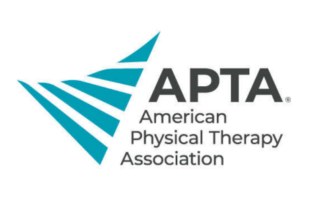The Alliance for Connected Care aims to:
Demonstrate the importance of Connected Care as a tool for improved quality and efficiency.
Build significant and high-level support for Connected Care among leaders in Congress and the Administration.
Enable more telehealth to support new models of care.
Lift geographic and site restrictions for telehealth in Medicare.
Establish a consensus-based, standardized definition of Connected Care to advance with policymakers.
Alliance News
Center for Health Care Strategies: Telehealth and Medications for Opioid Use Disorder: Evidence Roundup
Center for Health Care Strategies: Telehealth and Medications for Opioid Use Disorder: Evidence Roundup In the face of an overwhelming overdose crisis, largely driven by the rise in the synthetic opioid fentanyl, telehealth for MOUD treatment promises to benefit many people. Currently, prescription volumes for MOUD are low and certain under-resourced communities experience significant disparities in accessing this treatment. Emerging evidence indicates strong levels of patient satisfaction, retention rates similar to that of in-person treatment, and high rates of adherence to buprenorphine. This blog post reviews evidence and implementation resources with emerging state and federal policies to help enhance [...]
Oxford Academic: Association Of Covid-19 And the Prevalence of In-Person vs Telehealth Primary Care Visits and Subsequent Impacts On Tobacco Use Assessment And Referral For Cessation Assistance
Oxford Academic: Association Of Covid-19 And the Prevalence of In-Person vs Telehealth Primary Care Visits and Subsequent Impacts On Tobacco Use Assessment And Referral For Cessation Assistance The COVID-19 pandemic dramatically altered patterns of health care seeking and delivery with a considerable rise in telehealth visits. This study examined one year prior to the onset of COVID-19 and two years after to evaluate the assessment of tobacco use and assistance with tobacco cessation and differences during in-person vs telehealth visits. Telehealth visits were significantly less likely to include smoking status assessment and referral to smoking cessation counseling compared to in-person [...]
Health Affairs: We Need National Policies For Voice-Based Telepsychiatry
Health Affairs: We Need National Policies For Voice-Based Telepsychiatry As of April 2024, no federal legislation or guidance has been implemented to establish permanence for telepsychiatry, and specifically for voice-based visits. With all telehealth flexibilities expiring at the end of 2024, in this piece, authors advocate for the permanent adoption and coverage of VBT, illustrate its importance using patient data, and provide recommendations on measures to incorporate it into policies to promote equity. Additionally, the authors encourage national adoption of universal terminology representing voice-based telehealth visits, defined as visits that take place through live real-time vocal interactions without the [...]
AARP: Pandemic-Era Trends in Telehealth Use among Americans with Private Health Insurance
AARP: Pandemic-Era Trends in Telehealth Use among Americans with Private Health Insurance AARP released a report, which assessed changes in telehealth use from 2019 to 2021 among people younger than 65 who are enrolled in private, employer-sponsored insurance (ESI) plans, which insure nearly two-thirds of Americans under age 65. It also examined how Americans used telehealth in the first two years of the pandemic and how telehealth use differed by demographic factors such as age, urban versus rural residence, and income, as well as social determinants of health (SDOH) indicators.
Kidney Medicine: Patient Perspectives on Using Telemedicine During In-Center Hemodialysis: A Qualitative Study
Kidney Medicine: Patient Perspectives on Using Telemedicine During In-Center Hemodialysis: A Qualitative Study In the wake of the COVID-19 pandemic, the United States (US) federal government expanded originating telemedicine sites to include outpatient dialysis units. For the first time, nephrology practitioners across the US could replace face-to-face visits with telemedicine for patients receiving in-center hemodialysis. This study describes patients’ perspectives on the use of telemedicine during in-center hemodialysis. Integrating telemedicine into future in-center hemodialysis care using a hybrid approach could potentially build trust, optimize communication, and augment care.




















